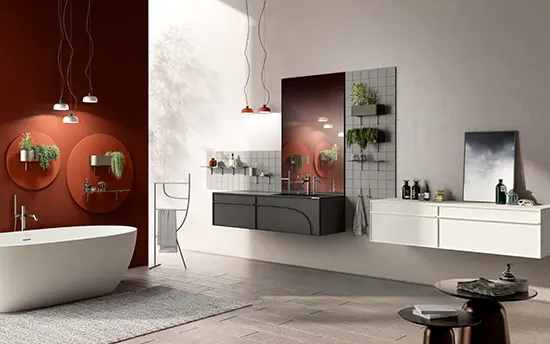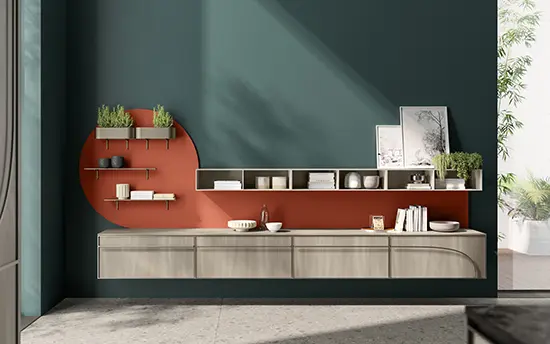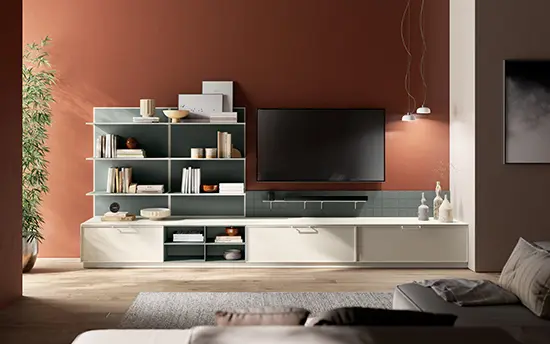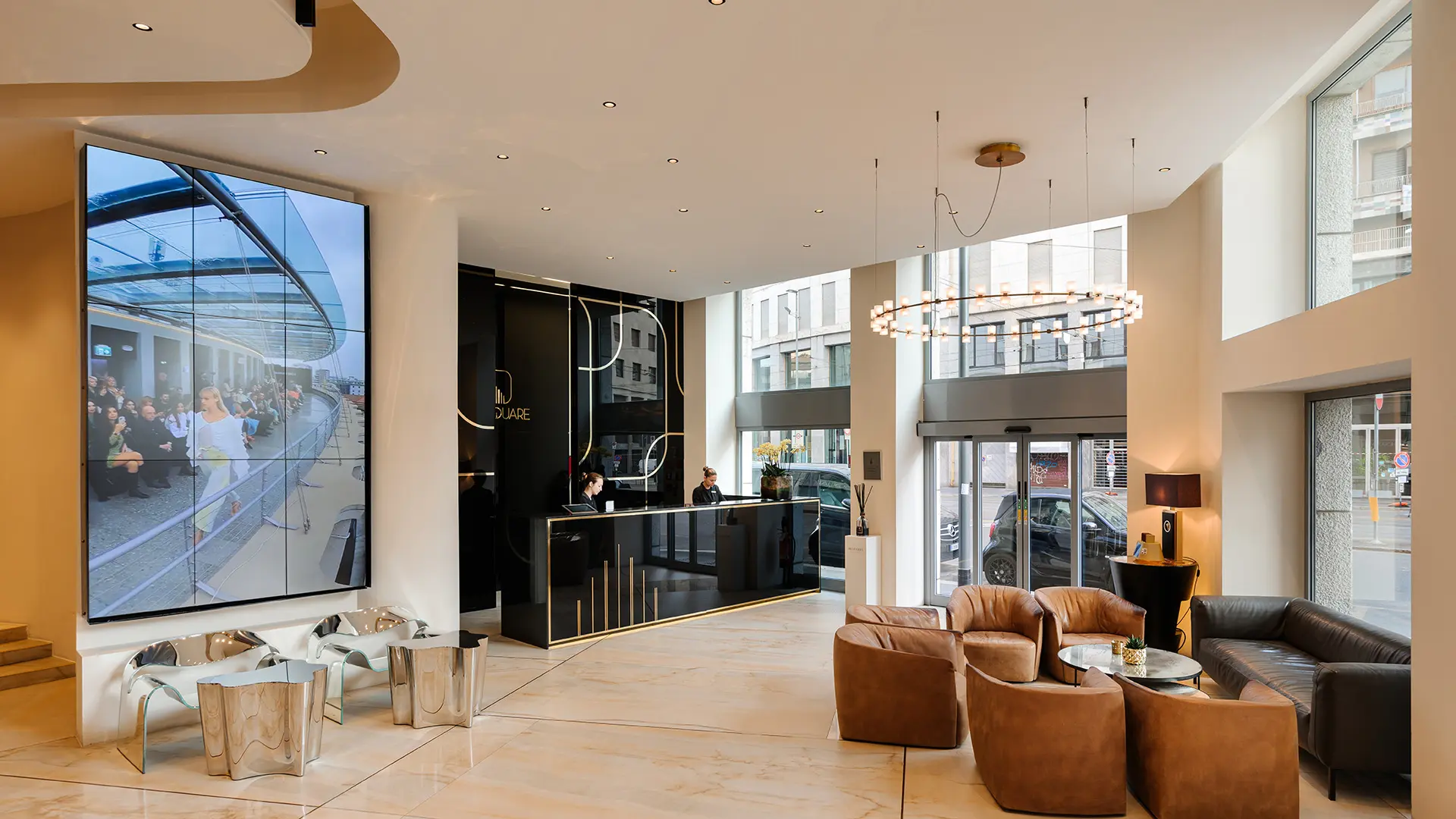Traceability, welfare, circularity, as well as art and culture: Arper, De Castelli, Florim, Flos and Pedrali present their points of view
The new furnishing system by Luca Nichetto for Scavolini

Jeometrica by Luca Nichetto, Scavolini
The designer, hailing from Italy but Swedish by adoption, presents a preview of the Jeometrica furnishing system, the new project for Scavolini to be presented at EuroCucina and the Salone Internazionale del Bagno 2022. Between assonances, inspirations and a more democratic approach to design
Let's say by the classic method. The company contacted me asking me whether I was interested in working with them. I’ve always liked the idea of collaborating with Scavolini, as well as designing a kitchen, even though the project then expanded to the living room and bathroom. I liked the scope for designing a kitchen that would enter the homes of ordinary people, without being part of a rather too upmarket dimension.
More than love, let's say it's made for people who cook. Which brings much stricter design constraints. You have to work on mass production, it's not a question of social status.
As a designer I loved dealing with this issue because I think it’s a project that lives with limitations, especially if you think of it in terms of the people who will be using it.
This was one of the first reasons that compelled me, especially after seeing the designers that the company worked with in the past, like Ora-ïto, Nendo, Michael Young, Fabio Novembre. I was interested in the range of these designers who had tried their hands at a more democratic product.

Jeometrica by Luca Nichetto, Scavolini
Design was born with a more industrial aim. Now its public has shrunk even if it has never been meant for everyone. Even when there was a boom, with made in Italy, not everyone had designer homes. I often say this: if I hadn’t been a designer, I could never have afforded 90% of the products I’ve designed. This gives you some idea of where overall design has gone to.
The project grew out of reflections on the real use of the kitchen. With the pandemic, we all rediscovered rooms in the house that before we used only in part and were not as versatile as they are now. One of the main rooms was the kitchen, which became the center of the home again. The rooms that reminded me of when I was little, when my grandparents cooked from morning to night, had changed.
I thought it would be interesting to design something functional and aesthetic but it would be a prosthesis of what can happen and it would be great not to lose it.
The kitchen serves for cooking, there’s no denying it. And it’s also a ritual. From there I came up with the idea of creating a kitchen that took some cues from the art world.

Jeometrica Living by Luca Nichetto, Scavolini
I let myself be influenced by a series of artists that I like and whose fascination I feel, created by the volumes, the geometric forms that in some way are part of the DNA in designing a kitchen that starts from modular qualities. Then Donald Judd, Ellsworth Kelly and a number of artists who have made installations bound up with materials.
Starting from that concept I reasoned about the doors, their function and how to give them a different quality to keep the visual bond. Then some features recalled a fundamental kind of interior to express what I had in mind: the trattoria.
Exactly. We drew inspiration from that interior, through shelves and straw-bottomed chairs and mingled them with the art world also encountered in the ritual.
So the worktops on round tables, the pattern of the tiling that become boiserie but crossed with the tiles, and little holes that enable you to customize the product as you wish, and shelves that intersect with the pattern but that can also stand alone.
We discovered different variants, more expressive or minimalist depending on how the choice of materials was personalized. This gives you a white canvas within limits, and limitations, but you can change it and deck it out differently from time to time, depending on your taste or the type of setting. This approach kept the lines clean and the product recognizable and easy to understand.

Jeometrica Living by Luca Nichetto, Scavolini

10 must-see design and architecture exhibitions of 2026
From new interpretations of masters of the 20th century like Antoni Gaudí and Verner Panton, to radical research on living materials, to poignant reflections on the climate – especially in the runup to the Winter Olympics – as well as on our longing for objects, on sound, on the spaces we live in... here is a selection of exhibitions you cannot afford to miss, to keep your curiosity alive and your creative muscles in top shape



 Exhibitions
Exhibitions






